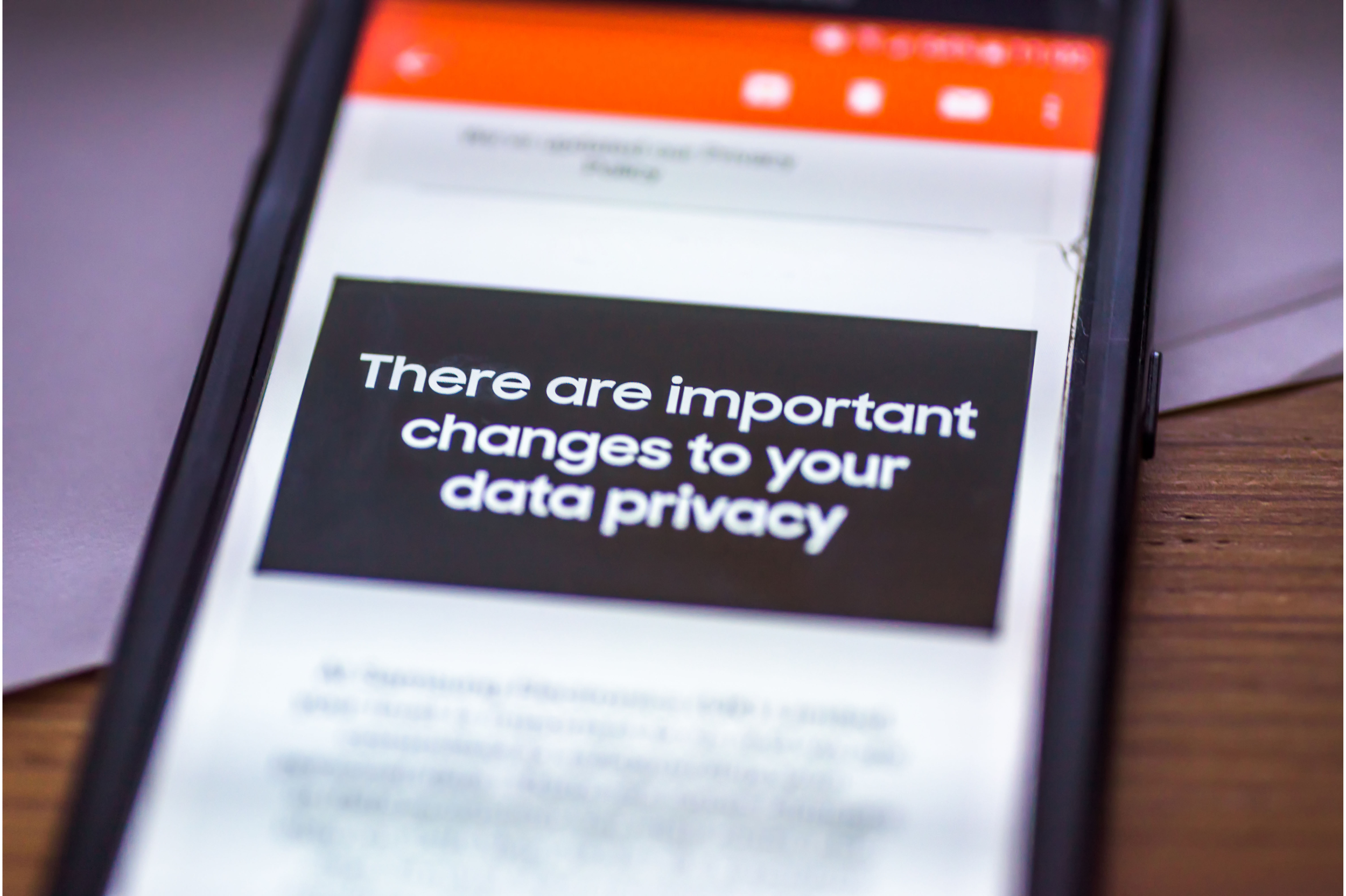Gaining an understanding of the different data types has never been more important for advertisers. With the deprecation of third-party cookies, advertisers need to know what data they need to be successful, while staying data privacy compliant. This article will define each data type, its sensitivity for data privacy compliance, the benefits, and how it can be used in advertising in a third-party cookieless future.
What Is First-Party Data and Why It’s Important?
First-party data (aka 1st party or 1P data) refers to any data that an entity directly collects from their site visitors or customers. In other words, the data is owned by the same company (or party) that collected it. Some examples of first-party data are: data in a CRM, subscription data, survey data, behavioral data collected from the company’s websites, apps, etc.
First-party cookies refer to the way data is collected from a website or app. The cookie is actually a data file stored by the web browser. It remembers users so they don’t have to sign-in each visit. It also collects behavioral data and matches it up to the existing information collected on that user.
First-party data may include PII (Personal Identifiable Information). If it does, that data is highly sensitive and needs to be appropriately protected. It also should not be shared with other entities in order to stay compliant with data privacy regulations. Collecting it with consent is perfectly fine and a critical tool for businesses to use.
How First-Party Data Is Used by Advertisers
- Targeting – To determine the ideal audience for targeting.
- Collaboration – To collaborate with publishers to determine advertising fit for targeting their ideal audience.
- Personalization – To personalize the advertising content to directly relate to the interests of their target audience.
- Journey Optimization – First-party data is also largely used to make consumer journeys most seamless and tailored (ex: auto-filtered information in forms, etc.)
The Benefits of First-Party Data to Advertisers
- Valuable information that could be used to deepen engagement with customers
- Can be used to improve marketing efforts – better targeting, messaging, and smoother customer journey
- Can be used to scale advertising target audience to those with “lookalike” traits and behaviors
What Is Zero Data and Why It’s Important?
A new (and often confusing) subcategory of first-party data is zero data. Zero-party data was coined by Forrester in 2018, who defines it as data shared with a company or brand intentionally or voluntarily by the user. This includes when a user knowingly signs up for a subscription, fills out a quiz or survey, submits a form, or engages in any interactive digital experience. Typically there is a value exchange for this data where the user gains something by providing this information. It could be a whitepaper, a product discount, a gift card, or a more personalized digital experience.
Zero data has the same data privacy concerns as first-party data if it contains PII. That said, advertisers will often specify how it will be used so they may have more flexibility with this permission-explicit data. This makes this data the most privacy-compliant data possible.
Zero data is a great way to collect first-party data, but is no different in its use than first-party data.
What Is Second-Party Data and Why It’s Important?
Second-party data (aka 2nd party or 2P data) is data that another entity collected, but is accessible by another company—either through purchase or collaboration. Marketers often purchase it when they are looking to extend their marketing database to reach new potential customers. An example of this would be if a clothing brand made for women decides to add a men’s line and needs relevant targets to market to.
If the data purchased has PII, then it needs to be protected just like first-party data with PII. This data is only legal to be purchased if the company selling it has obtained consent to sell the PII-containing data.
How Second-Party Data Is Used by Advertisers
- Scale Reach – Used to increase the scale of existing marketing efforts
- Enter New Market – Used to open a new market segment, typically for a new product line
- Fill Data Gaps – Used to enrich existing first-party data with a new layer of information that could not be collected by the purchasing company
The Benefits of Second-Party Data to Advertisers
- Generate new revenue from the new audience purchased
- Gain a deeper understanding of a target audience with new data
- Just the act of building a relationship with a company to purchase data may prove fruitful for future collaborations, partnerships, data exchanges, etc.
What Is Third-Party Data and Why It’s Important?
Third-party data (aka 3rd party or 3P data) is data from a third party that has aggregated multiple data sources and made them available for purchase. The downside to third-party data is that it may lack accuracy and quality so it is important to understand where the data is coming from and how old the data is.
Third-party cookies are created by domains that are not the website a user is visiting. They are created to enable a third-party solution to collect the information it needs to provide value for the company that owns the domain. This might be anything from a website tool to an advertising solution. The cookie is typically placed on a website via a script or tag. The website runs the third-party server’s code and the third-party can therefore gain information about the user’s behavior while on the website. The most common use of third-party cookies is by AdTech vendors who are looking to use or sell that information for advertising purposes.
Regarding data sensitivity, if the data purchased has PII, then it needs to be protected just like first-party data with PII. This data is only legal to be purchased if the company selling it has obtained consent to sell the PII-containing data.
How Third-Party Data Is Used by Advertisers
- Scale Reach – To increase the scale of the marketing database for broader reach
- Enrich Data – To enrich first-party data for a deeper understanding of customer/target audience interests, behavior, etc
- Find Targets – Find new audiences to market to based on shared interests with the target audience
- Predicting – To predict future behaviors based on actions across sites.
The Benefits of Third-Party Data to Advertisers
- Can significantly increase data scale for marketing campaigns
- Improve targeting and messaging with a better understanding of the ideal audience
- Improve accuracy and scale of the target audience for better advertising performance
The Subtle Differences between First-Party, Second-Party, and Third-Party Data
The main difference between first-, second-, and third-party data is the source. First-party data is collected by the company that they store/own. Second-party data is collected by a peer company and purchased by another company (or it’s shared with them through a partnership agreement). Third-party data is collected from multiple unknown sources and bought by a company.

How First-Party, Second-Party, and Third-Party Work Together for Advertisers
All of these data types can be used together to give advertisers the strongest, most accurate data sources possible. Combining these data types can help advertisers better understand their target audience, expand their advertising reach, and improve marketing efforts for better engagement and loyalty. That said, with the increasing focus on data privacy and regulatory compliance, advertisers need to know what makes sense to keep their company safe from liability.
How Advertisers Can Reduce Risk of Data Privacy Non-Compliance
- Look for third-party data that does not contain PII via IDs, but rather can be layered on top of first-party data to better understand user behavior.
- Continue collecting first-party data, but have as much of it be zero data as possible. This builds a high-quality, privacy-compliant data source.
- Use that first-party data to collaborate in privacy-safe ways. This can be data clean room collaborations or explicit partnerships that have relevant data that you can safely share as second-party data.
ShareThis is a leader in helping companies enhance their data with highly-relevant behavioral data. And ShareThis behavioral data is completely privacy-compliant, making it a smart choice for improving advertising outcomes today and in the cookieless future.
Want to speak to a data expert on how to meet your advertising goals? Connect here.




